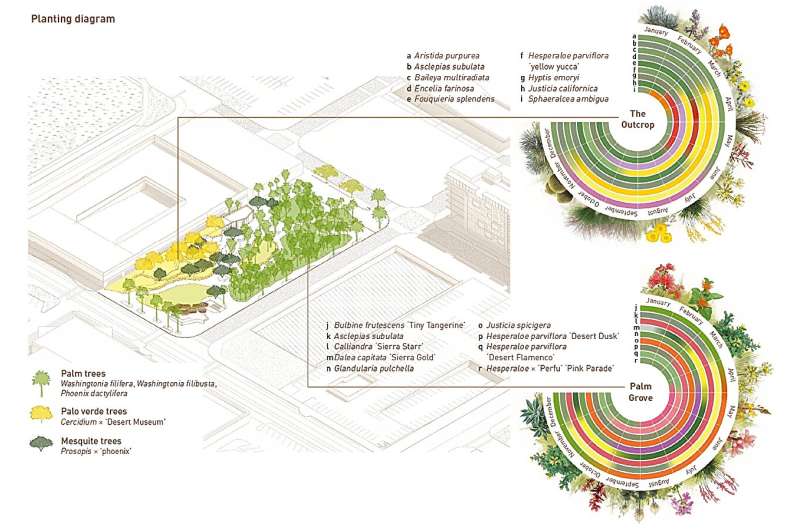This article has been reviewed according to Science X's editorial process and policies. Editors have highlighted the following attributes while ensuring the content's credibility:
fact-checked
proofread
Creation of a climate adapted urban oasis through the hyperlocal lens—Palm Springs Downtown Park in California, USA

Palm Springs Downtown Park is an inviting 1.5-acre urban oasis for residents and visitors to Palm Springs, a design-forward desert destination nestled along the base of the San Jacinto Mountains along the southwestern boundary of the Coachella Valley in California's Sonoran Desert of the U.S.
The site lies in the ancestral homeland of the Agua Caliente band of the Cahuilla people, who seasonally migrated between the shady palm groves and meltwater creeks of mountain canyons in summer and the hot springs and temperate climate of the valley floor in winter.
The park is also located on the historic site of the Desert Inn, Palm Springs' first wellness resort. Nellie Coffman, the Desert Inn's founder, famously promoted the "space, stillness, solitude, and simplicity" of Palm Springs, and the park is imbued with her spirit.
Drawing inspiration from local natural features such as the oases of endemic California fan palms (Washingtonia filifera) in Palm Canyon and the striated geology of nearby Tahquitz Canyon, the park design creates hospitable, comfortable spaces for the community in the extreme heat of the desert.
The park features dense palm grove planting with ample shaded areas for seating, two picnicking and event lawns, rock outcrop-like amphitheater seating for community events, shade structures inspired by palm fronds, and a grotto-like interactive water feature for play and cooling.
Locally sourced stone, native desert plantings, and creature comforts create a common ground rooted in a hyperlocal use of materials to create a sense of place for the diverse, growing community of Palm Springs and its visitors.
The work entitled "Creation of a Climate Adapted Urban Oasis Through the Hyperlocal Lens—Palm Springs Downtown Park in California, U.S." was published on the journal of Landscape Architecture Frontiers.
More information: Jason Shinoda et al, Creation of a Climate Adapted Urban Oasis Through the Hyperlocal Lens—Palm Springs Downtown Park in California, USA, Landscape Architecture Frontiers (2023). DOI: 10.15302/J-LAF-1-040032
Provided by Higher Education Press





















